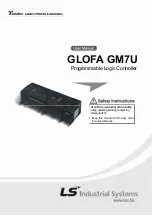
2
THEORY
GS3
water until the soil saturates, then the soil is placed on filter paper in
a vacuum funnel and suction is applied. An electrical conductivity
measurement on the water removed from the sample will give the
solution electrical conductivity.
Theoretically, the two are related by the bulk density. An exam-
ple calculation will illustrate this relationship: A soil is at 0.1
m
3
m
3
VWC, has a pore water EC of 0.7 dS/m, and a bulk density of 1.5
Mg/m
3
.
We can calculate the solution EC as follows.
φ
= 1
−
ρ
b
ρ
s
= 1
−
1
.
5
2
.
65
= 0
.
43
(3)
Solution EC =
σ
p
Θ +
σ
d
(
φ
−
Θ)
φ
=
0
.
7(0
.
1) + 0
0
.
43
= 0
.
162 dS/m (4)
In this example,
φ
is the porosity,
ρ
b
is bulk density,
ρ
s
density of
the minerals (assumed to be 2.65 Mg/m
3
), subscript
d
is distilled
water, and Θ is volumetric water content. We assume that the EC
of the distilled water is 0 dS/m. In practice, solution EC calculated
from this method and solution EC taken from a laboratory soil test
may not agree well because wetting soil to a saturated paste is very
imprecise.
2.6
Reference
Hilhorst, M.A. 2000. A pore water conductivity sensor.
Soil Science
Society of America Journal
64:6 1922-1925
8












































